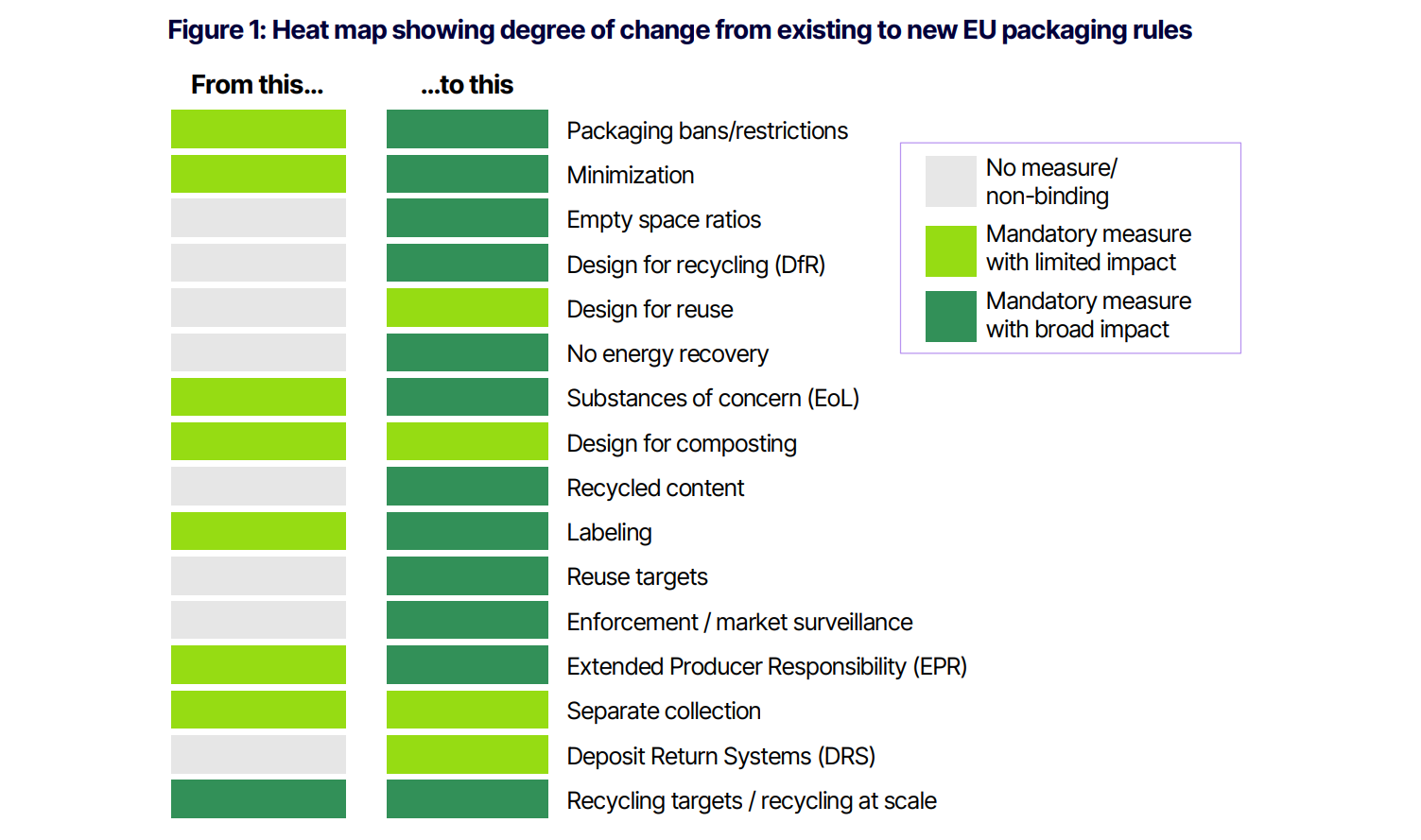This two-part series explores these shifts. In part one, we focus on the PPWR, outlining its key provisions and the necessary steps for businesses. Part two will examine the global evolution of EPR and its impact.
Here’s what to expect in 2025 and beyond.
European Union Updates Its Packaging Rules
The Packaging and Packaging Waste Regulation (PPWR) is a new law in the European Union that will come into effect in early 2025. It aims to reduce waste, make recycling easier, and encourage the use of reusable and recycled materials. Companies will need to act fast to make sure their packaging is ready for these changes.
What are the new rules?
- Reducing Unnecessary Packaging: Packaging will need to use the smallest amount of material needed to protect the product. For example, if a product is wrapped in several layers of plastic or has extra space inside the box that isn't necessary, it won’t be allowed. The packaging used for transport or e-commerce (like shipping boxes) must not have more than 50% empty space.
- Recycling Requirements: All packaging must be designed so it can be easily recycled. Each type of packaging will be given a score based on how recyclable it is. To be allowed on the market, packaging must meet a minimum score. The better the packaging can be recycled, the lower the fees companies will have to pay under the Extended Producer Responsibility (EPR) system. The secondary legislation will define the criteria for design for recycling and recyclability performance grades by 2028.
- Using Recycled Materials: Packaging that contains more than 5% plastic must include a certain amount of recycled plastic. This plastic must come from materials that have been recycled within the EU or from places that follow the same recycling rules.
- Reusability Measures: Packaging designed for reuse must be able to be used several times and must be easy to refill or clean. For example, a plastic crate used for shipping goods should be strong enough to be used multiple times before being recycled. The rule also states that 40% of transport packaging in the EU must be reusable. If packaging is only used within one EU country or by a company’s own sites, 100% of the packaging must be reusable.

The updated PPWR, two years in making, provides an overhaul of the existing rules shifting to mandatory rules. Source: Edelman
How to ensure packaging compliance?
To comply with the regulation, businesses must take essential steps in packaging design, recycling, and reporting. Here’s an easy-to-follow guide to help you meet these requirements:
- Assess Packaging: Review the types and amounts of packaging your company uses, and identify areas where sustainability can be improved through methods like Life Cycle Assessment (LCA).
- Design for Sustainability: Choose materials that are recyclable, reusable, or compostable, and create packaging that minimizes waste.
- Increase Recycling Rates: Invest in technology or partner with others to improve the recyclability of your packaging and support local recycling efforts.
- Implement Reuse Systems: Set up or participate in programs that encourage the reuse of packaging, like using returnable containers.
- Report and Monitor: Track and report packaging data as required by regulations to ensure your company meets recycling and waste management targets.
- Engage Stakeholders: Work together with your partners and customers to align your sustainability efforts and achieve shared goals.
Who will it apply to?
Any company that uses, sells, or imports packaging in the EU will need to follow these rules, with some exceptions for packaging used in medical, veterinary, or dangerous goods.
Each Member State will designate specific agencies or bodies to oversee the implementation and enforcement of the PPWR. Non-compliant companies may face financial penalties determined by each member state's legal framework. Beyond fines, sanctions could include restrictions on product sales or mandatory corrective actions.